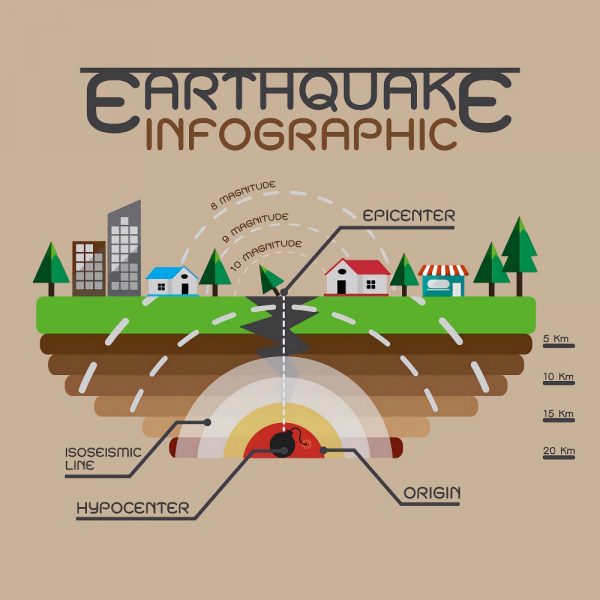Scientists Improve Earthquake Detection via Subsea Fibre Cables

Scientists have found a way to further improve the detection of earthquakes by harnessing the unique properties of existing subsea fibre optic cables – specifically their repeaters, which straddle the ocean floors between countries and are used to carry vast amounts of data. The study used the 5,860km EXAI cable between the UK and Canada.
The idea of using optical fibre cables, which transmit data using pulses of laser light, to detect earthquakes is nothing new (here). But it was only in the last couple of years when this started to be extended to the subsea environment in a serious way (here) – this harnessed Google’s existing 10,500km long “Curie” cable, which can transmit data at speeds of 72Tbps (Terabits per second) – via four 18Tbps fibre pairs – between the USA and Chile.
Various external events can change the polarization of light in a land-based fibre, such as lightning strikes and changes in temperature, but it’s a different story in the deep ocean, where the temperature remains fairly stable and there are few disturbances. As such, the polarization is fairly stable, except for when there’s a big event like an Earthquake or Tsunami (i.e. its electric field oscillates in just one direction, rather than any which way).
Advertisement
However, a new research paper – published in Science Magazine, has found a way to further improve the resolution of such detections by harnessing the signal repeaters (these normally help to maintain the laser light) that are installed up to every c.90km on the cable they tested. By comparison, last year’s study was only able to look along the entire length of a cable, without really harnessing the repeaters.
Research Summary
We demonstrate the detection of earthquakes and ocean signals on individual spans between repeaters of a 5860-kilometer-long transatlantic cable rather than the whole cable. By applying this technique to the existing undersea communication cables, which have a repeater-to-repeater span length of 45 to 90 kilometers, the largely unmonitored ocean floor could be instrumented with thousands of permanent real-time environmental sensors without changes to the underwater infrastructure.
In other words, each repeater was essentially turned into a vibration sensor, when coupled with a laser source. Naturally, this sort of approach will of course become even more effective once multiple fibres can be harnessed together to help spot and locate the source of such disturbances.
The main benefit from turning such cables into massive geophysical sensors – all without disrupting their primary purpose (carrying lots of data) – is that it will make the detection of submarine earthquakes and tsunamis much faster, as well as more accurate. This may in turn result in earlier warnings, which could save lives while also helping to teach us more about the ocean.
In theory, once refined, this approach could be harnessed to help monitor deep-water currents and sea-floor temperatures. We suspect that it might also be used to help detect when a submarine attempts to tap into such cables in order to spy on another country’s communications, but that’s another story.
Advertisement
Mark is a professional technology writer, IT consultant and computer engineer from Dorset (England), he also founded ISPreview in 1999 and enjoys analysing the latest telecoms and broadband developments. Find me on X (Twitter), Mastodon, Facebook, BlueSky, Threads.net and Linkedin.
« Connect Fibre FTTP to Go Live in Cambridgeshire’s Sutton-in-the-Isle
Freedom Fibre Welcomes 1000th UK FTTP Broadband Customer »





















































Comments are closed